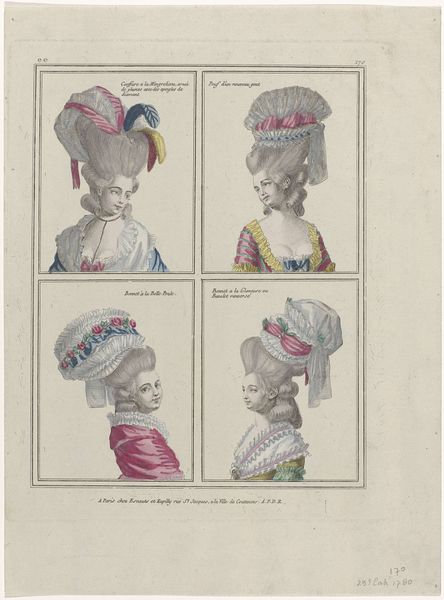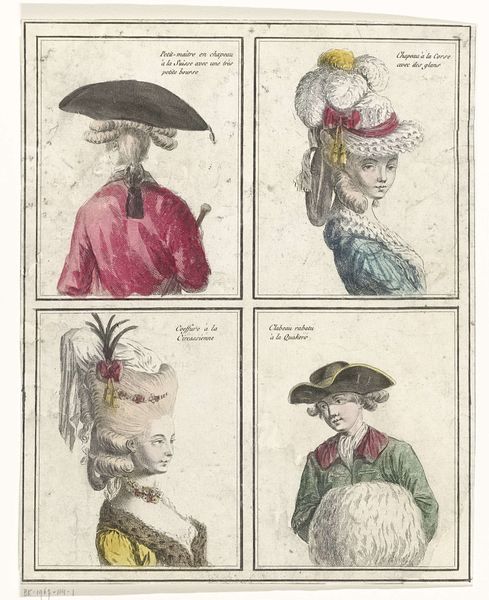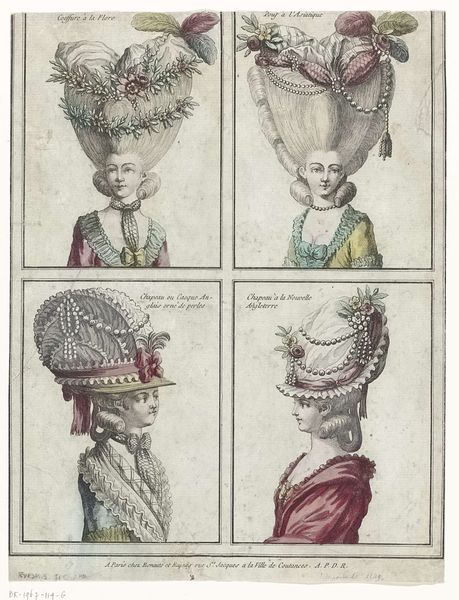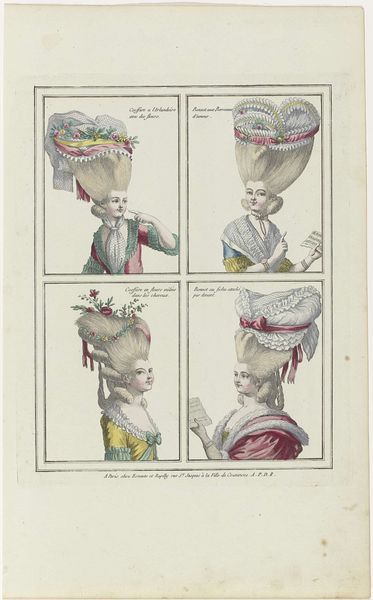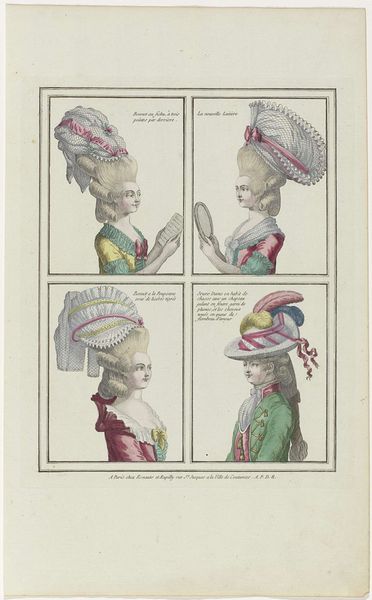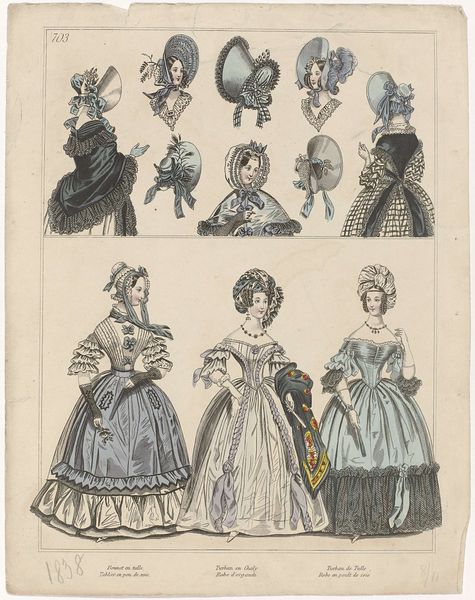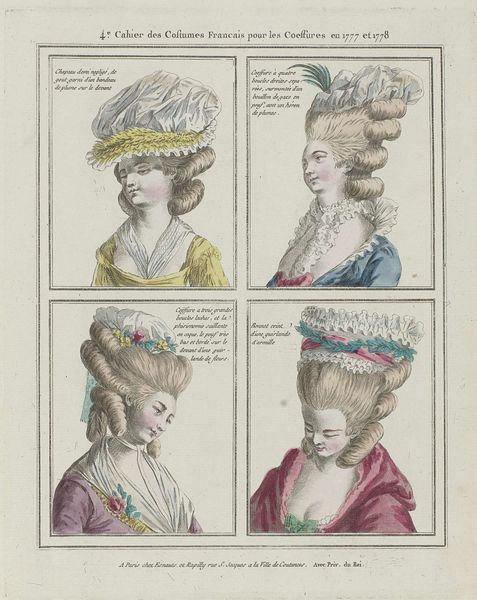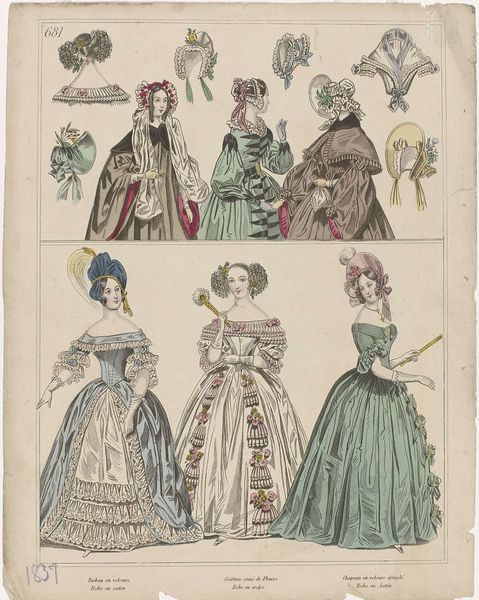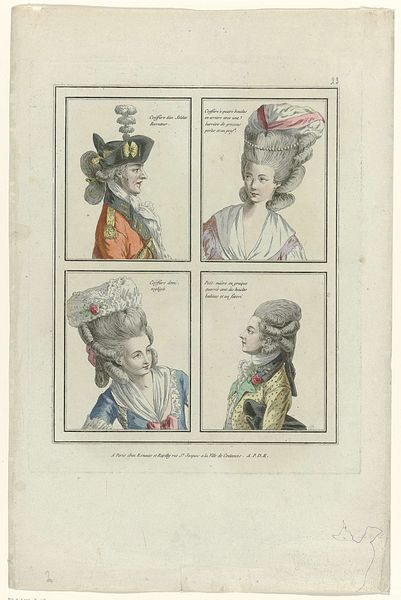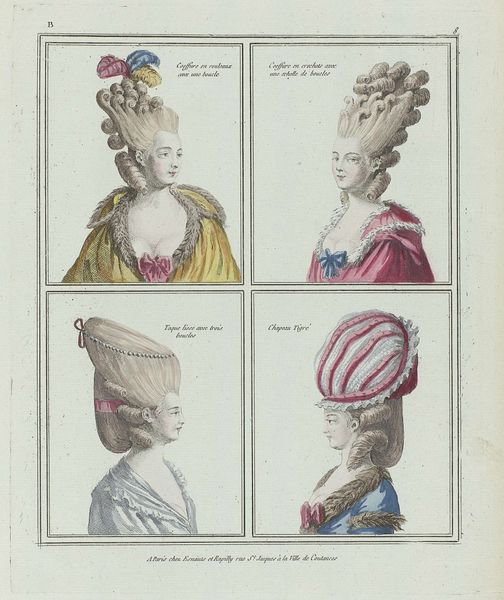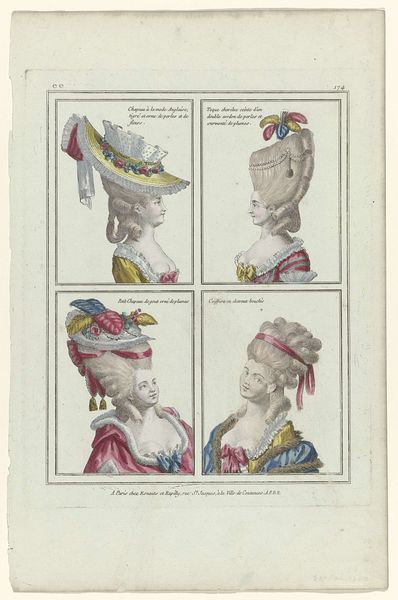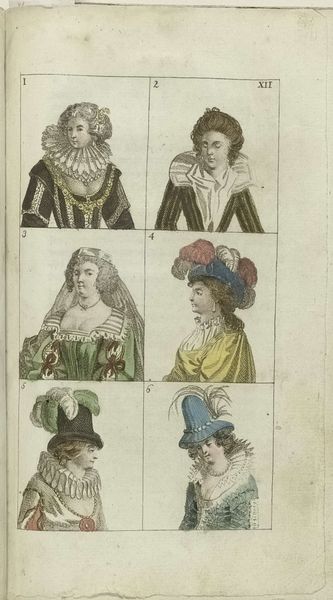
Dimensions: Image (each): 5 3/8 × 3 7/8 in. (13.6 × 9.8 cm) Plate: 11 1/8 × 8 3/8 in. (28.3 × 21.2 cm) Sheet: 14 15/16 × 9 1/2 in. (38 × 24.2 cm) Album: 15 9/16 × 10 7/16 × 1/4 in. (39.5 × 26.5 × 0.6 cm)
Copyright: Public Domain
Editor: Here we have "La Parure des Dames, Plate 7," a print by Mondhare et Jean, created sometime between 1771 and 1781. It depicts four studies of women's hairstyles. There’s an intriguing sense of the artificial here; everything seems so stylized and consciously constructed. What stands out to you from a formalist perspective? Curator: I am immediately struck by the rigorous organization of the composition. The print is divided into four distinct quadrants, each containing a study of elaborate hairstyles. Note the sharp, clean lines that delineate each of these contained spaces, creating a sense of order and control. Editor: Yes, I noticed that, it's almost like a grid system! Curator: Precisely. The color palette, too, demands attention. It's restrained yet playful, with muted pastel hues applied with delicate precision. Observe how the artists use colored pencil to emphasize the texture of the wigs and embellishments. Ask yourself: What does this tell us about the work's intention? Is it purely representational, or does it strive for a certain aesthetic ideal? Editor: So you're suggesting the choice of medium, the structured composition, and the colour palette, contribute to an ideal rather than just showing a picture? Curator: Precisely. The work seems to me a calculated exercise in visual refinement. The details, though elaborate, never overwhelm the underlying structure. Everything appears meticulously placed. The eye is constantly led through a series of calculated aesthetic relationships, contained within very strictly defined spatial zones. Editor: This formal analysis makes me look at this print so differently now; I see the artist’s control in a whole new way! Curator: Indeed, by understanding form, line, color, and composition, we unlock the artist's conscious and unconscious choices. It allows us to move past representation.
Comments
No comments
Be the first to comment and join the conversation on the ultimate creative platform.
